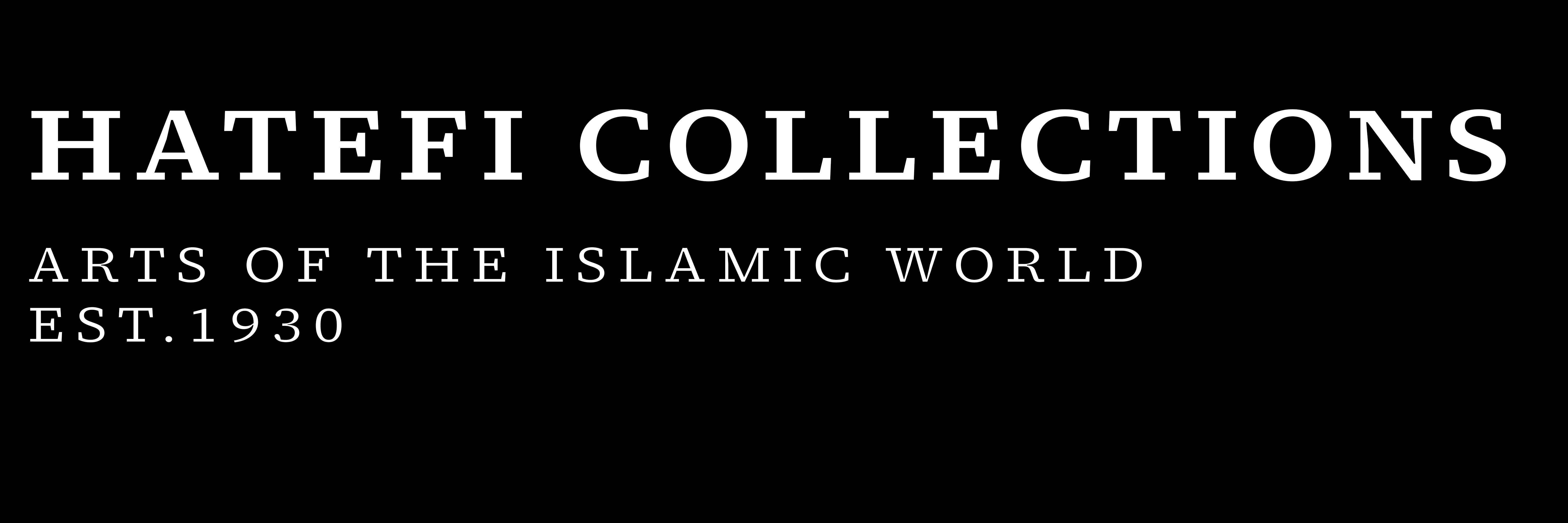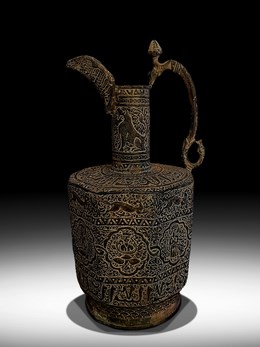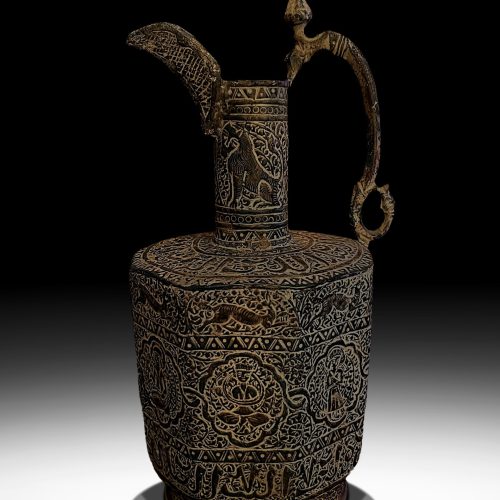PERIOD: | Late 12th Century |
|---|
ORIGIN: | PROBABLY KHORASAN, NORTH EAST PERSIA |
|---|
DIMENSIONS: | 35.5 x 16 Cm |
|---|
DESCRIPTION: | Of faceted drum shape rising from a cusped flat foot to a very slightly rounder shoulder, with a tall straight neck seated Lion gaping, grinned and a growing larger faceted spout, the straight handle joining the upper body filled with Quranic inscriptions to the neck, the spout decorated with ten roundels with the signs of placed chimbley figuring and hunting scenes giving The Chas assumed composition it is said to have been embraced by Mawsilians in northern Mesopotamia during the Ayyubid period and the signs associated with water, Pisces and Aquarius on the faucet, a line of animated Kufic above on dense scrolls, the shoulder with two rowing boats with floral and Quranic inscriptions the foot base it’s engraved with form shells symbols. Additionally, of the sixteen flutes, four have flattened surfaces with elaborate decoration including palmettes and Kufic inscriptions, four with pole medallions. |
|---|
FOOTNOTE: | This magnificent ewer, which is cast in bronze, relates to a number of others with either a globular or a fluted body. They all have upward pointing beak like spouts and lugs on the side of the neck for attachment of rings. The group can be dated through comparison with lustre pottery of similar form, datable to the second half of the 12th Century (for example Watson, Oliver, Persian Lustre Ware, London, 1985, fig. 45). For another comparison in the Keir Collection, see, Fehérvári, Islamic Metalwork of the Eighth to the Fifteenth Century in the Keir Collection, London, 1976, pl. 15, no. 51. A similar ewer was sold at Sotheby’s, Arts of the Islamic World, 13th April 2000, lot 64. |
|---|
PROVENANCE: | Private Collection (By Repute) since 1956, thence by descent. |
|---|
CERTIFICATE: | Comes with a certificate from the Art Loss Register |
|---|






